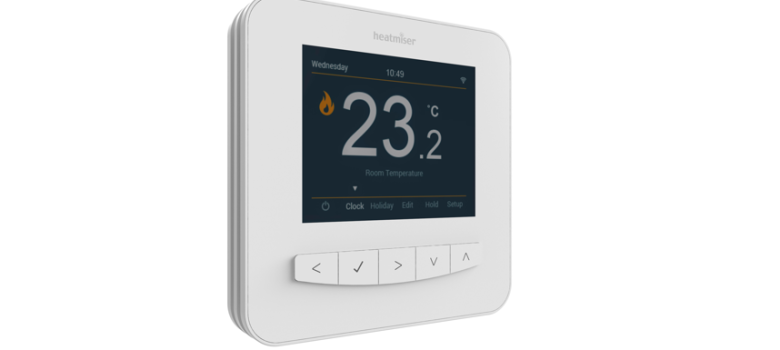
Most men appreciate a new gadget and I am no different – last week I had the new Heatmiser Smartstats installed in my home. These thermostats are the latest offering from Heatmiser and I have to say I am very impressed.
Anyway – the purpose of today’s blog isn’t really to talk about the Smartstat thermostats, instead I want to answer a question my partner asked since she now has an app to control the heating from her phone too (which I know is dangerous!)
Her question was simple,
If the house is cold, will turning up the thermostat to 300c help warm up the house quicker.
The question sort of makes sense and I can see why she asked it. You turn up an oven and the food will cook quicker. The thing is though that thermostats don’t work like that!
So first a quick recap on how thermostats work
When the boiler fires up, it produces hot water that travels around the heating system (normally radiators), which warms them up. The hot radiators heat the air, which is why you feel nice and warm.
The thermostat job is to ensure that the room doesn’t get too warm. Without the thermostat, the boiler (when switched on) would keep producing hot water – so the radiators would stay hot and the room would get warmer and warmer.
The thermostat reads the ambient temperature and sends a message back to the boiler to turn off when the pre determined temperature is met. So for example if you set the thermostat to 21 degrees (which is about average for most homes), then once the room reaches this temperature, the thermostat tells the boiler to switch off.
>>> How warm should my house be? <<<
Obviously there is still hot water in the radiators, so the room will continue to warm up a bit, but very quickly the radiators will cool down and so the room will begin to cool down (as heat escapes through walls / windows etc).
Once the room drops past 21 degrees, the thermostat will tell the boiler to turn on again, so the radiators will warm up – and this process just goes on and on – the temperature fluctuating slightly around the 21 degrees mark.
So back to the question – Will turning up the thermostat heat my home faster?
Hopefully you can now see the answer is no it won’t. The boiler is the bit of kit in the house making the hot water, the thermoset just simply stops the home overheating.

If you do want to make your home warm up quicker, then the key is to stop or at least minimise heat loss. Cavity wall insulation / loft insulation / solid wall insulation / double glazing and draught proofing are all proven ways to get your home warmer quicker and they will also lower your energy bills.
The final thing worth mentioning is that the TRV controls on the radiators (these are the valves with the numbered dials on) work in the same way. Turning them up to max will absolutely make the room warmer, but it won’t make any difference to the rate at which the room warms up!
Think we missed something? Do you have a different opinion?
Comment below to get your voice heard…
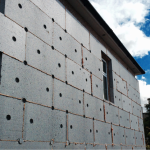
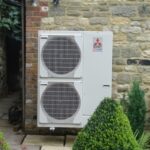
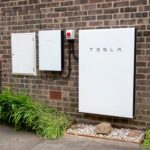


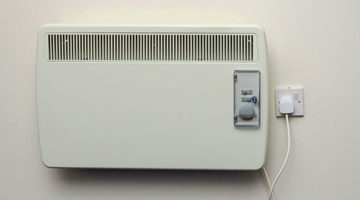
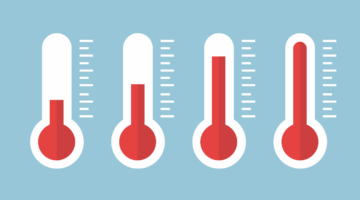





I disagree with the final paragraph. A thermostat is a simple on/off mechanism whereas a TRV opens and closes gradually, so as it approaches set temperature the rate of heating will decrease until TRV is totally closed. Ergo, set TRV to a higher setting and it will stay fully open for longer, thus warming the room faster. Just remember to reset TRV when room has reached required temperature.
I’m sorry this is wrong for a lot of new boilers, my boiler changes the flow temperature depending on the target room temp, so if I set the room target higher it will heat the house quicker.
Hi Gary,
We are just going on the Energy Saving Trust’s line on this – http://www.energysavingtrust.org.uk/domestic/thermostats-and-controls
A lot of people have old boilers by the way!
Many thermostats work comparable to the trv like Jim Oxlade suggested, that is they taper off before you reach desired temperature, slowing the rate of change for the room temperature. If you think about it depending on the system this means it reduces coil heat or it reduces the flames on an old boiler.
A way to help understand this is to put a cup of water in a pan, do this twice, then ignite the stove underneath each pan at full flame. About halfway through drop the flame to one pan. What you’ll see is eventually both pans will reach boiling but the time delay would be in minutes.
Technically depending on how hot and what difference between current temp and desires temp you can speed up temperature change. However many smart thermostats prevent this by regulating the speed at which a house heats up not the temperature, so the rate of change will always be 1 minute per degree.
Essentially, it would make you warmer – but to fully make your house warmer, you’ll need to completely insulate it – which includes installing double glazing or even triple glazing.
actually the rate of heating does not decrease because the thermostat contains a magnetic switch attatched to a bimetallic strip which can only be on or off